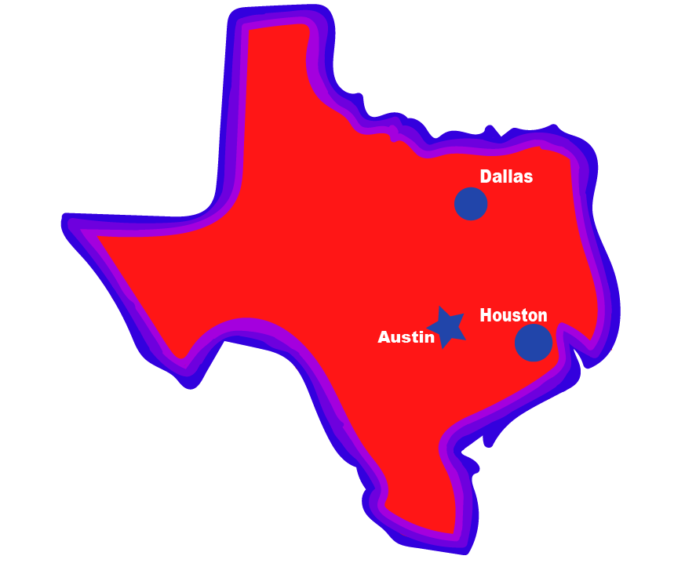
By Ava Dunwoody | Staff Writer
As the Nov. 3 election approaches, debate over which way Texas will lean has led voters to question if Texas is becoming a “purple” state. Having been strictly Republican (red) since 1976 in the presidential elections, Texas now has an increasing number of Democratic (blue) voters in the prediction polls.
According to the Real Clear Politics Average, Trump is winning Texas by 4.4 points at 49.2% and Biden at 44.8%. In the 2016 election, The Real Clear Politics Polls had Trump up by 11.7 points at 52.2% and Clinton at 38.3%.
Tenino, Wash. sophomore Charlie Letts is Vice Chair of Baylor College Republicans and said she does not think Texas is becoming a purple state. Letts said she sent a poll to 22 members of her organization and 20 of them also did not think so.
“Texas is competitive this year,” Letts said. But the “difference between a competitive state and a swing state is that swing states are always competitive, like Wisconsin, Florida and Michigan.”
Letts said Texas is still “one of the nation’s GOP strongholds,” and that even with more Democratic predictions in the polls, Texas won’t be easily shifted.
“You think of Texas, and you think Republican,” Letts said. “It’s a big Republican state. It takes time for a state to become a swing state. We aren’t going to see Texas go blue this election all of the sudden. It takes years to turn.”
Shreveport, La., sophomore Veronica Penales is president of the College Democrats of Baylor and a student government senator. She said she does think Texas is becoming a purple state.
“It’s been a while since Texas has had any blue representation at all,” Penales said. “But I think this year is going to be the year that that changes. Does that mean I think Texas is going to be a blue state? No, but I do think that Texas is the most competitive swing state in the nation right now.”
Penales said this is especially because of the “emergence of every political issue being in the spotlight this year” because “people are forced to pay attention” to politics. She said even people who don’t usually participate in elections are getting involved because of current events.
Another reason Texas is gaining more Democratic votes is because of out-of-state migration. In a 2019 Texas Relocation Report by Texas Realtors, the number of people who relocated to Texas within the United States went up by 78.1% from 2017 to 2018. Some of these new Texas residents come from known blue states, like the 86,164 people from California.
“I do think [out-of-state migration] is a factor,” Letts said. “But also, you can hope that people realize why they are moving to Texas for a better life. Don’t vote for what you just fled.”
Penales said “even with that presence, Texas is still very deeply red.” She thinks that “even with immigrant influences and everyone coming in from different states,” Texas is still dominantly Republican. Penales said the change is instead coming from another factor — younger voters.
“People are just tired,” Penales said. “You think of conservative Republican, you think of old, white and rich. I think people are tired of that demographic at this point and are ready for new representation. We have a lot of younger voters who are just upset with how politics has been run.”
Whether or not Texas is going purple, both groups stress the importance of voting. Letts said she has seen a lot of undecided voters in current polls and hopes that they are encouraged to vote.
“Because people can’t decide, I hope that isn’t a reason they don’t come out and vote,” Letts said. “I hope that people educate themselves more than they have in the past. I think it’s important to vote for somebody. Don’t just be silent. Your vote is your voice, and it’s important.”
Penales also said she hopes people are getting the message to go out and vote. To her, filling out a ballot isn’t always as straightforward as selecting red or blue.
“One thing that we all need to remember regardless of the outcome of this election is that sometimes, the political issues that we see in the world are not as simple as two sides fighting each other,” Penales said. “We need to advocate for what we believe, and sometimes that bridges party lines.”
Correction Oct. 20, 2020, 4:15 p.m.:
A previous version of this article stated that 37,810 Californians moved to Texas. That number has been changed to reflect the accurate account.





